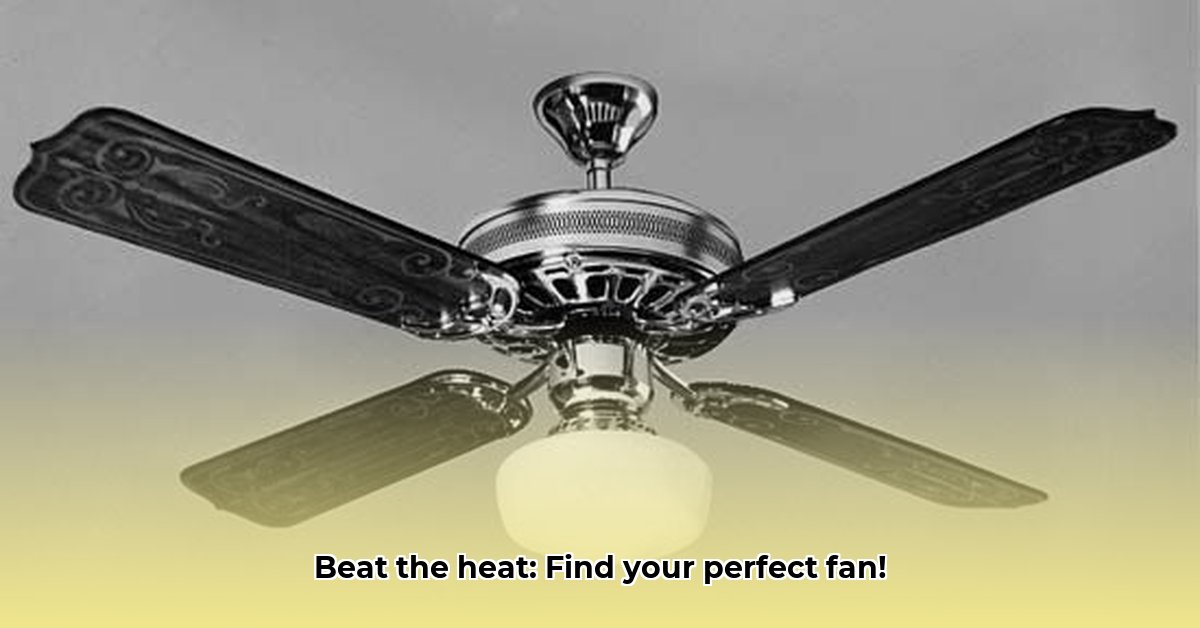“`markdown
Find Your Perfect Electric Fan: A Comprehensive Buyer’s Guide
Choosing an electric fan can feel overwhelming with so many options available. This guide simplifies the process, helping you identify the ideal fan based on your needs and preferences. We’ll explore crucial aspects like size, features, energy efficiency, and price, ensuring you make an informed decision that maximizes comfort and minimizes costs. Whether you’re seeking a powerful cooling solution for a spacious area or a quiet, compact fan for personal use, this guide provides the knowledge to navigate the market effectively.
Understanding the Electric Fan Market and Modern Cooling Technologies
The electric fan market is diverse, with numerous models catering to various needs and budgets. This vast selection reflects the continued popularity of fans as a cost-effective and energy-efficient cooling solution. Major online retailers like Amazon and Walmart offer a wide array of choices, making it essential to understand your specific requirements before browsing. By understanding the market dynamics, you can better navigate the options and pinpoint the perfect fan. Key insights:
- The extensive range of available models underscores the ongoing demand for electric fans.
- Online marketplaces significantly influence consumer choices, highlighting the importance of informed decision-making.
- Identifying your individual cooling requirements is essential for effective product selection.
Selecting the Right Electric Fan: Balancing Airflow and Personal Comfort Preferences
Choosing the right electric fan requires careful consideration of your specific cooling needs and preferences. Start by assessing the size of the area you intend to cool. A larger room demands a fan with higher airflow capacity to effectively circulate air.
Consider the desired level of airflow. CFM (Cubic Feet per Minute) indicates the volume of air a fan moves, with higher CFM values signifying stronger airflow. Determine whether an oscillating fan, which covers a wider area, is preferable to a stationary model. Explore additional features like timers, remote controls, and adjustable speed settings for added convenience. Prioritize energy efficiency by selecting fans with Energy Star ratings to minimize electricity consumption. Finally, establish a budget to narrow your search and ensure affordability.
| Feature | Considerations |
|---|---|
| Size | Match the fan size to the room dimensions to ensure adequate coverage and airflow. |
| Airflow (CFM) | Select a CFM rating appropriate for the room size; higher CFM for larger spaces, lower CFM for smaller spaces. |
| Oscillation | Decide whether you need oscillation to cover a wider area or prefer a focused, stationary airflow. |
| Features | Consider timers for automatic shut-off, remote controls for convenience, and multiple speed settings for customized comfort. |
| Energy Efficiency | Prioritize Energy Star-rated fans to minimize energy consumption and reduce electricity bills. Check the Energy Efficiency Ratio (EER) for more precise comparison. |
| Price | Set a realistic budget and compare prices across different brands and models to find the best value. |
For Manufacturers: Innovating and Differentiating in a Competitive Market Landscape
In the highly competitive electric fan market, manufacturers must embrace innovation to gain a competitive edge. Focus on developing energy-efficient models that meet stringent environmental standards. Explore the use of durable and sustainable materials to appeal to environmentally conscious consumers. Integrate smart features, such as Wi-Fi connectivity and voice control, to enhance user convenience.
Invest in robust online marketing strategies, including SEO (search engine optimization) and ASO (app store optimization), to increase product visibility. Utilize high-quality product photography and detailed descriptions to showcase product features and benefits. Consider global expansion opportunities to tap into new markets and cater to diverse consumer needs.
For Retailers: Enhancing the Shopping Experience and Driving Sales Conversion
Retailers play a crucial role in guiding consumers toward the right electric fan. Implement clear and intuitive product categorization to facilitate easy browsing. Optimize the online search functionality to enable customers to quickly locate specific models or features. Use compelling product imagery and comprehensive descriptions to highlight key selling points.
Incorporate customer reviews to build trust and provide social proof. Offer exceptional customer service to address inquiries and resolve issues promptly. Implement targeted promotions and bundle deals to incentivize purchases and increase sales volume.
The Future of Electric Fans: Trends, Innovations, and Sustainability
The electric fan market is poised for continued innovation, driven by increasing consumer demand for smart features, energy efficiency, and sustainable products. Expect to see more fans with advanced sensors, automated controls, and seamless integration with smart home ecosystems. Manufacturers will likely prioritize the use of recycled materials and eco-friendly manufacturing processes. Retailers will leverage data analytics to personalize the shopping experience and recommend products tailored to individual preferences. Research and development efforts will focus on creating more efficient and effective fan designs, potentially incorporating new technologies such as air purification and aromatherapy. Increasingly, consumers will seek out fans that blend cooling performance with sustainability and convenience.
Selecting the Most Energy-Efficient Electric Fan for Your Home and Minimizing Energy Consumption
Electric fans offer a significantly more energy-efficient alternative to air conditioners, resulting in substantial cost savings. However, different fan types vary in their performance and energy consumption. Careful consideration of your needs and budget is essential. Pay close attention to Energy Star ratings, CFM (cubic feet per minute), and wattage as indicators of efficiency. Smart fans provide enhanced control and potential for further energy savings. Strategic placement and usage can maximize the cooling effect of a fan. Key points:
- Electric fans offer substantial energy savings compared to air conditioning.
- Choosing an energy-efficient model and understanding your cooling needs are crucial.
- Optimizing fan placement can enhance cooling and reduce energy waste.
Assessing Your Cooling Needs and Room Ventilation Requirements
Before selecting an energy-efficient electric fan, evaluate your specific cooling needs. Consider the size of the room you need to cool, as a small bedroom requires a different fan than a large living room. Determine the level of airflow you require; do you need powerful cooling, or is gentle air circulation sufficient? Establish a budget and identify desired features, such as smart controls or extra functionalities. These factors will guide your selection process and ensure you choose the most appropriate fan.
Comparing Fan Types and Their Energy Efficiency Characteristics
The market offers a diverse range of fan types, each with its strengths and weaknesses in terms of energy efficiency. Here’s a comparison of some popular options:
-
Ceiling Fans: Generally the most energy-efficient option for larger spaces due to their effective air circulation at relatively low energy consumption. Look for models with high CFM ratings and Energy Star certification. Ensure proper blade direction for cooling in summer and warming in winter.
-
Tower Fans: Offer a space-saving design and decent airflow, but typically consume slightly more energy than ceiling fans.
-
Box Fans: Known for their powerful airflow, but often less energy-efficient than other fan types.
-
Desk/Stand Fans: Provide portable and convenient personal cooling, but have lower overall airflow and may not be the most energy-efficient choice for larger rooms.
-
HVLS (High-Volume, Low-Speed) Fans: Designed for large industrial spaces, these fans move large volumes of air slowly, resulting in efficient cooling. They are typically not suitable for residential use.
-
Bladeless Fans: Offer a safe and quiet operation, but generally consume more energy compared to traditional bladed fans.
Key Features and Smart Technology Integration for Optimal Energy Savings
Once you’ve chosen a fan type, focus on these key features to maximize energy savings:
-
Energy Star Rating: Indicates that the fan meets specific energy-efficiency standards set by the EPA.
-
CFM (Cubic Feet per Minute): Quantifies airflow. Balance your need for powerful cooling with energy consumption.
-
Wattage: Lower wattage generally translates to lower energy consumption.
-
Speed Settings: Allow you to adjust airflow to match your comfort level and reduce energy waste.
-
Oscillation: Distributes air more widely, potentially reducing the need for higher fan speeds.
-
Timer: Automatically turns the fan off after a set period, preventing unnecessary energy use.
-
Smart Features: Smart fans with smartphone app control provide precise energy management and scheduling capabilities.
Making Your Decision: A Practical Guide and Actionable Steps
- Assess your needs: Determine room size, required airflow, budget, and desired features.
- Choose a fan type: Select a type that best suits your needs, considering energy efficiency and performance.
- Check energy-efficiency ratings: Prioritize high CFM and low wattage, and look for the Energy Star label.
- Compare features: Choose features that enhance convenience and energy savings, such as timers and smart controls.
- Read reviews: Evaluate other customers’ experiences with the fan’s performance and reliability.
- Purchase from a reputable retailer: Ensure warranty coverage and easy returns if necessary.
Remember, selecting the most energy-efficient electric fan for your home is a personalized decision. Focus on the factors that are most important to you, and choose a fan that meets your specific needs and budget. With careful consideration, a well-chosen fan can provide both comfort and energy savings.
Maintaining Your Electric Fan: Essential Steps for Longevity and Optimal Performance
Regular cleaning, ideally every three months, prevents dust buildup and maintains fan efficiency. Lubricate moving parts (if applicable) to reduce friction and extend fan lifespan. A properly maintained fan can last for approximately 10 years or more, depending on usage and care. Different fan types require specific maintenance procedures.
- Regular cleaning improves fan performance by preventing dust accumulation.
- Proper lubrication prolongs the life of moving
- Craving Ancient Roman Snacks? Unveiling Secrets & Recipes: Longtail Spotlight - August 15, 2025
- Lost in History? Labeled Ancient Rome Map Reveals Empire’s Secrets Today! - August 15, 2025
- Unearth Ancient City Map Rome: New Atlas For Urban Planners [Reference] - August 15, 2025
















